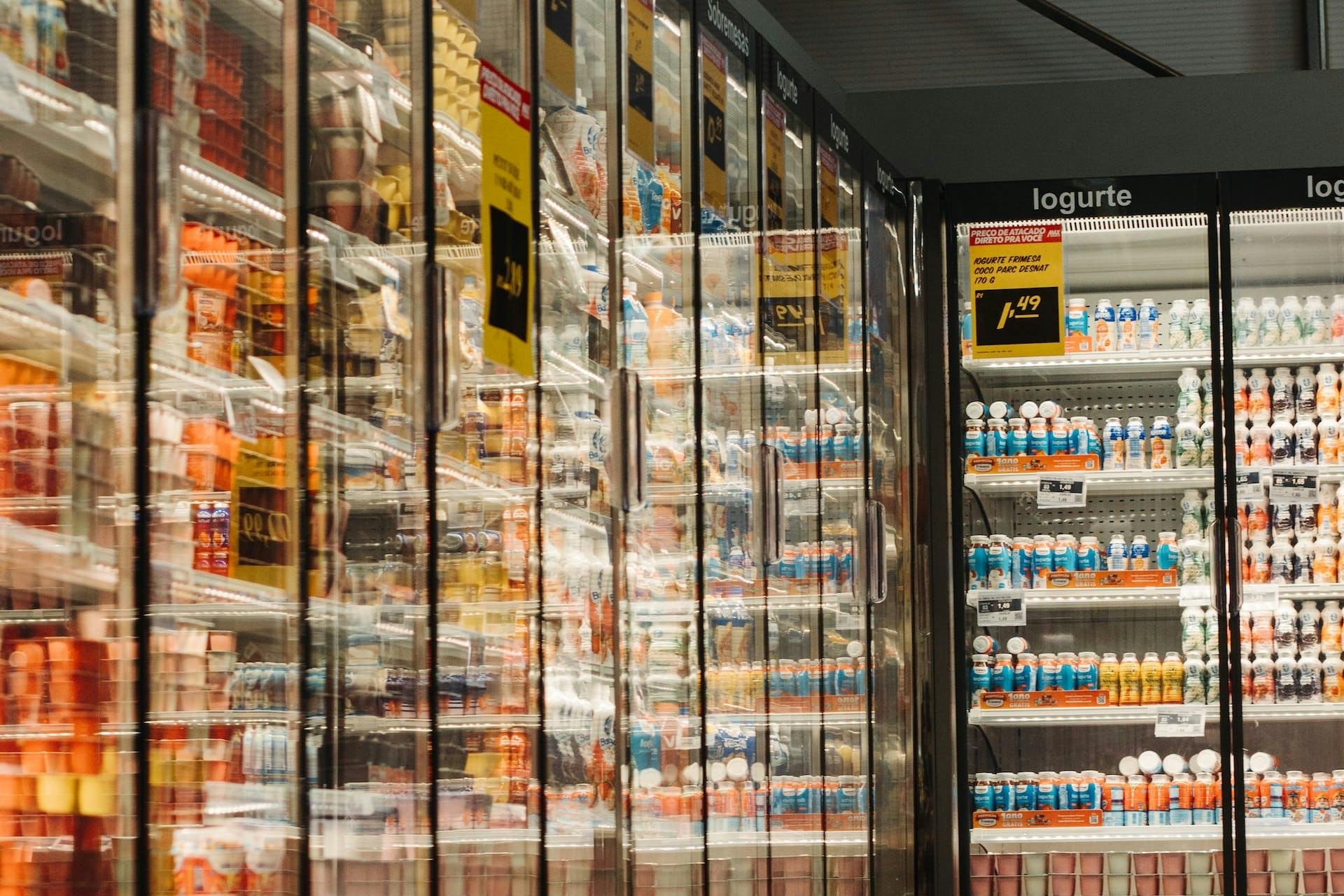An estimated 283 million Americans ate boxed cereals in 2020, and many of us have childhood memories of begging Mom or Dad at the grocery store for our favorite breakfast cereal. And why wouldn’t cereal be a quintessential breakfast food? The labels are often full of health-promoting claims like “whole grains” and “heart-healthy.”
While the intention behind breakfast cereals may have been health-focused in the early 20th-century, over time the food industry has shaped them into the modern-day processed foods we know today. But when — and how — did cold cereal become so commonplace in our diets?
A brief history of breakfast cereals
Our modern-day breakfast cereals walk a thin line between health food and sweet indulgence. Breakfast cereal was originally thought of as a digestive aid and then obtained religious properties before it transitioned into a sugary snack [2].
The rise of the Kellogg brothers
One of America’s first wellness gurus, Dr. John Harvey Kellogg, focused on patients’ digestive health and made a version of cereal we know as granola [3]. Here's how that turned into Corn Flakes:
- 1877: Dr. Kellogg used a baked mixture of flour, oats, and cornmeal and believed that baking at high temperatures would make the grains more easily digestible and therefore healthier [3].
- 1898: A wheat-based cereal dough was accidentally left out too long, which caused it to ferment [2]. Not about to waste his product, Dr. Kellogg discovered that this once-moldy dough produced large, thin flakes that became crispy when baked in the oven — perfect for packaging and selling as wheat flakes cereal.
- 1906: After experimenting with the recipe, Dr. Kellogg’s younger brother, Will Kellogg, found that replacing wheat with corn made the flakes crunchier and tastier — and Corn Flakes were born [2]. He added sugar to the flakes to make them more palatable to a mass audience, and began mass-marketing them while including the first in-box prize.
Over 100,000 pounds of the cereal were sold in the first year — an impressive feat [4]. But moving from a focus on whole wheat to cheaper ingredients, adding sugar, and strategically including a kids’ prize all paved the way for Kellogg’s to become the household cereal titan it is today.
In fact, the company’s current net sales are 14.2 billion U.S. dollars, and have been on the rise since 2017 [5].
The race is on: competing cereal brands in the 1900s
Around the same time that Corn Flakes were invented, The Quaker Oats Company made a food science breakthrough in 1910 when they discovered puffed cereal by forcing rice grains to explode under pressure and began marketing Puffed Rice and Puffed Wheat [2].
Fast-forward to the 1940s, when General Mills released the now-household-name cereal Cheerios, originally named CheeriOats [2]. In 1979, the company made Honey Nut Cheerios, the brand’s most popular version.
Cereals explode in popularity after World War II
There was a large rise in cereal consumption after World War II in parallel with the baby boom.
At the same time, the companies manufacturing these cereals appealed to parents by tapping into the growing “health food movement” in the late 20th century, marketing the “natural” whole grains and fruit in their cereals.
We’ve seen Big Food continue to shapeshift over the years, responding to trends in consumer demand and buzzwords like “organic” and “natural.” Barbara’s Bakery, for instance, launched the first organic cereal in the 1990s called Puffins, a molasses-sweetened, wheat-free corn cereal [2]. Then, in the late 2000s, Kellogg’s created the Kashi line to target consumers who sought organic products.
Additionally, a labeling movement began as consumers craved more details and were paying closer attention to ingredients. Cereals began promoting products that were “GMO-free” and “gluten-free,” which are perceived as healthier options.
However, like many of Big Food’s tactics, these labels are there to draw you, the consumer, in.
Spoiler alert: a lot of these health-claiming cereals have the same if not more sugar than the original.
How the food industry has transformed breakfast cereals to prioritize profits
Cereals have become a staple in today’s American diet and across the globe. They are convenient and cheap and found everywhere — in grocery stores, elementary schools, hospitals, and cafes.
According to a 2019 industry analysis, cereal sales accounted for an $11 billion share of the market [6]. In 2018, the World Health Organization (WHO) published the last “Health Behavior in School-aged Children” (HBSC) study and showed that among school children, 66.5% had ready-to-eat cereals for breakfast [7].
This isn’t a coincidence: food production has manipulated salt, sugar, and fat to make products like breakfast cereals difficult to resist.
The cereal industry alone uses a staggering 816 million pounds of sugar each year, calculating bliss points to satisfy your taste buds while also leaving you craving more, and engineering a golden ratio of salt, sugar, and fat to increase palatability and target your brain’s evolutionary desire for processed foods [6].
On top of that, the U.S. government has provided subsidies and support programs for American farmers after the Great Depression to stabilize crop prices and continue farming efforts to provide families with an affordable food supply [8]. Farmers are most efficient at producing highly subsidized crops like wheat, soybeans, and corn.
In return, highly processed products made from subsidized crops like HFCS sweeteners and hydrogenated soybean oils have flooded the market, decreasing the price of breakfast cereals.
These programs and policies have had unintended health consequences as they drive the obesity epidemic and metabolic health crisis [8].
Because the prices of these grains are so low, it allows the prices of products containing HFCS and hydrogenated fat to be low as well. And the cheapest way to make foods taste good is to add sugars and fat [8].
In other words, unhealthy foods are supported and healthy options are not. In response, Big Food creates products and marketing campaigns to drive demand to match the increase in supply.
Is cereal healthy? A look at the nutrition of popular breakfast cereals
Processed food products, like breakfast cereals, are attractive to consumers as they are tasty, convenient, and shelf-stable, with a shelf life of about 9 months [9].
Most Americans purchase at least one box of cereal per shopping trip, and a collective total of 2.7 billion boxes of cereal each year [10]. This means that the average American consumes about 14 pounds of cereal annually [6].
Alarmingly, breakfast cereals are one of the foods most frequently marketed to children, which influences children’s food preferences [11].
An American child is more likely to consume a sugar-sweetened product than a fruit or vegetable on any given day — a scary statistic, as food taste preferences are established at an early age [12].
Big Food plays a critical role in nurturing these taste preferences, even if it means swapping out sugar and replacing it with non-nutritive sweeteners, which may also have a negative effect on metabolic health [13].
The use of fortification in cereal
Fortification of cereal-grain products was introduced in 1941 to combat nutrient deficiencies [14].
In short, vitamins are added to food and beverage products, such as grains, milk, and juice, to improve nutrient profiles. Although fortification has been advantageous to population health, in terms of breakfast cereals, this is just another marketing angle for Big Food.
The best thing for our health is to consume foods that contain these vitamins and minerals naturally — without all the added sugar.
The health implications of processed cereal
Today’s breakfast cereals not only contain a ton of added sugar, including both refined grains and high-fructose corn syrup (HFCS), but they also have food dyes and other processed ingredients.
Some studies found a positive association between the frequent marketing of unhealthy foods (i.e, foods high in saturated fats, sugars, and salts) and risks for childhood obesity [13].
Other studies show that overeating processed foods (like breakfast cereals), contributes to obesity and cardiometabolic risk factors in children and adults [15].
A 2018 study found that children’s cereals had a similar energy and sodium content per 100 grams compared to other cereals, but contained significantly higher levels of total sugar and lower levels of protein and dietary fiber [16].
The same study also found that children’s breakfast cereals were less healthy compared to other cereals on the market and the use of nutrition claims is misleading consumers, making them think products are healthier than they really are.
The tide begins to change: new FDA rules and the future of breakfast cereals
Through strategic product diversification and promotion, breakfast cereals took over the breakfast food market. But cereal manufacturers have always needed to tap into the pulse of health and wellness trends — as well as evolving government guidelines — and make product shifts accordingly.
We’ve seen this happen a number of times over the past 20 years.
- 2010: For decades, sugar, corn, and wheat were the main ingredients in breakfast cereals, but that all changed when whole grains were introduced as a substitute for refined grains in 2010 [9].
- 2003-2018: The use of refined grain dropped by 45% on average, and whole grains were introduced in amounts that matched the reduction in refined grains by 1.45 times [9].
On an individual nutrient level, recipe changes have been linked to reductions in calories, total sugars, saturated fats, and sodium content while fiber and protein contents increased. That is to say, some cereals are becoming healthier, thanks to consumer demands and more stringent government guidelines.
To obtain the FDA healthy stamp, cereals must contain [17,18]:
- 0.75 ounces of whole grains
- No more than 1 gram of saturated fat
- 230 milligrams of sodium
- 2.5 grams of added sugars
The top cereals that no longer qualify as ‘healthy’ are [17,18]:
- Raisin Bran (9g added sugar)
- Honey Nut Cheerios (12g added sugar)
- Corn Flakes (300mg sodium)
- Honey Bunches of Oats (8g added sugar)
- Frosted Mini Wheats (12g added sugar)
- Life (8g added sugar)
- Special K (270mg sodium; 4g added sugar)
What this all means is that the nutritional makeup of cereals is slowly moving in a better direction, as ingredients improve and government guidelines are updated. But there’s still a long way to go, and plenty you can do today to shop smarter and eat a nutritionally well-rounded breakfast.
Beyond cereal: building a metabolically healthy breakfast
If you love cereal, pay attention to the ingredients used and the nutrition facts on the back to ensure that you’re minimizing your intake of processed ingredients, sugar, and refined carbohydrates, and capitalizing on your protein and fiber intakes. Better yet, try out some of these breakfast alternatives (you can find the recipes here):
- Vegetable omelet
- Breakfast egg muffins with sweet potato and spinach
- Greek yogurt parfait with berries and nuts
- Whole grain toast with ricotta and smoked salmon
- Steel-cut oatmeal with walnuts
- Toast with nut butter
- Coconut pecan pumpkin muffin
- Chia-seed pudding
A good rule of thumb is to try to build a complete, savory breakfast that has a balance of healthy fats, protein, complex carbs, and fiber.
Key takeaways
Breakfast cereals have been around since the late 1800s and have been evolving with the times ever since. Big Food continues to make misleading health claims, include more sugar as an addictive ingredient, and target children with cartoon characters on the boxes. At Veri, we support food freedom and want to provide you with all the information needed for you to make the best choice to support your lifestyle.
- Breakfast cereal was first created as a digestive aid and was soon transformed into a sugary start to the day that uses television and characters to target children.
- Big Food capitalizes on breakfast cereal sales by utilizing bliss points, high-palatability formulas, low-cost, and shelf-stableness to attract consumers.
- Government subsidies have allowed farmers to continue to produce grains and other low-cost products that Big Food uses to flood the market with highly processed foods with a high profit margin.
- By being aware of what is in the products that we consume and not being misled by Big Food and certain health claims, you can be empowered to make the right choice for your body.
References:
- https://www.statista.com/statistics/279999/us-households-consumption-of-breakfast-cereals-cold/
- https://www.nytimes.com/interactive/2016/02/22/dining/history-of-cereal.html
- https://www.history.com/news/cereal-breakfast-origins-kellogg
- https://www.invent.org/inductees/john-h-kellogg
- https://www.statista.com/topics/1808/kellogg-company/#topicOverview
- https://www.creditdonkey.com/breakfast-cereal-statistics.html
- https://www.ncbi.nlm.nih.gov/pmc/articles/PMC8394760/#B5-foods-10-01772
- https://www.ncbi.nlm.nih.gov/pmc/articles/PMC1247588/
- https://www.ncbi.nlm.nih.gov/pmc/articles/PMC7555475/
- https://www.bakeryandsnacks.com/Article/2019/03/05/96-of-US-consumers-buy-cereal-every-time-they-shop-survey-reveals
- https://www.ncbi.nlm.nih.gov/pmc/articles/PMC7230794/
- https://www.ncbi.nlm.nih.gov/pmc/articles/PMC5033729/
- https://www.cambridge.org/core/journals/public-health-nutrition/article/global-trends-in-added-sugars-and-nonnutritive-sweetener-use-in-the-packaged-food-supply-drivers-and-implications-for-public-health/A6375EB569DCDA4899730EC40C69D1CC
- https://pubmed.ncbi.nlm.nih.gov/11444421/
- https://jamanetwork.com/journals/jama/article-abstract/2782866
- https://www.ncbi.nlm.nih.gov/pmc/articles/PMC6068905/
- https://www.cnbc.com/2022/10/11/fda-redefined-healthy-these-7-cereals-do-not-qualify.html


